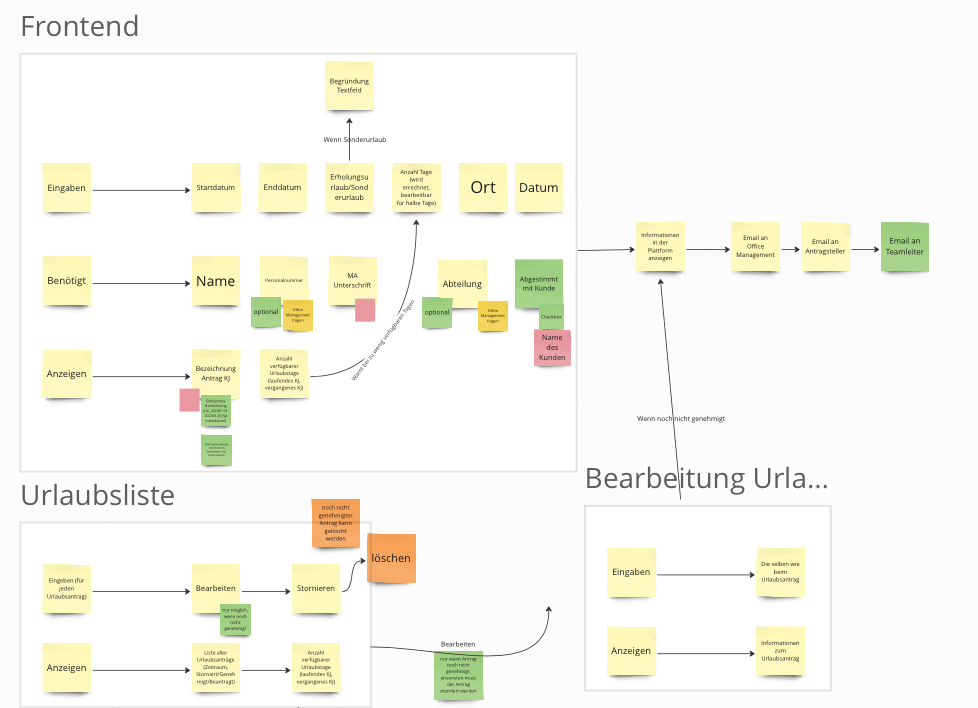
Do Not Reinvent The Wheel in The Energy Market
An overview of business models in the energy market

Henning Schneider
Monday, April 10, 2017
An overview of business models in the energy market
Business Models in The Energy Market
The energy market has been in a state of flux for some time now as a result of energy market liberalization and the energy transition. Since this change puts users of traditional business models under pressure, but at the same time also promotes new value creation potentials, there is already extensive information for business models in the energy industry.
The task is therefore not so much to (discover) new business models, but rather to evaluate and implement these business models in a structured way, taking into account the individual starting situation of each company.
In this post, I, therefore, present our business model database, which already contains over 60 sustainable business models. The sorting was based on trends (flexibility, cost reduction, sustainability, big data, market entry), corresponding value creation stages, as well as target groups.
The business models were evaluated on the basis of costs to be incurred, possible cost degression, achievable revenues, market maturity of the business model, and the scenarios developed in the Mastering The Complexity of Energy Markets .

Business Models For Energy Market Trends
For starters, the trends in the energy market are considered in order to present selected business models to the database.
Big Data in The Energy Industry

The intersection of different data creates the potential for new business models. In general, these business models on the subject of Big Data are characterized by relatively low costs, but also by limited revenue potential. Most business models dealing with this trend have already reached market maturity. They sharpen the service orientation of the company and can complement the traditional commodity-driven value proposition. The business models are interesting for all presented scenarios even if they unfold their full potential, especially for the complex, decentralized and regenerative energy world.
- Bundled products e.g. for metering point operation and electricity sales incl. analysis of savings potentials and flexibility options
- Automated balancing group accounting (or valid estimates)
- High-quality real-time data and their linking for load, demand-side and congestion management
Development And Marketing of Flexibility Options

The renewable and decentralized energy world needs flexible options to keep electricity supply and demand in balance at all times. In recent years, the first lighthouse projects have been implemented on the supply side. On the demand side, especially in the RLM (?) sector (industrial customers), many potentials have not yet been tapped. The costs for these business models are relatively high since new technology/hardware usually has to be used. Cost degressions through economies of scale and high revenue potentials nevertheless make the business models attractive. Flexibility marketing is particularly interesting for the "Renewable Energy" and "Expensive Energy" scenarios.
- Construction, planning and operation of power-to-X solutions
- Construction, planning and operation of hybrid heating systems (e.g. the combination of CHP, heat pumps, solar thermal and PV systems)
- Construction, planning and operation of large-scale industrial storage systems
- Active support of sector coupling (e.g. linking the electricity and mobility markets in the B2C sector)
Energy Supply as a High-Involvement Product

Due to the energy transition and the political debate, interest in the topic of energy is increasing. This new interest, at least from some customer groups (e.g., prosumers, RLM customers with their own energy procurement), can be served with business models that market energy supply as a high-involvement product and, for example, enable new convenience. The costs of these business models, like the revenue potential, are estimated to be rather low. Comparable to the topic of Big Data, the business models are aimed more at strengthening customer relationships than at new sources of revenue. The business models in this area are robust in relation to the scenarios presented, as they tap into new customer needs from existing customers.
- Consulting services for successful participation in tenders for RE projects
- Niche specialization e.g. as the residual power supplier for tenant power projects
- Automated tariff switching in the B2B sector
- Sales, installation of smart home products including a flexible electricity tariff
Cost Reduction For The Customers

The price of electricity and gas is largely determined by taxes and levies. Cost-saving potential can therefore be achieved less in the competitive area of price, but rather through intelligent supply with reduced taxes and levies. Low costs but also low revenue potentials characterize the business models. For the success of these business models, a broad customer base is important for the realization of economies of scale. The business models are particularly interesting for the "expensive energy" scenario, as the cost-saving potential tends to be high when prices are high.
- Consulting and implementation of an automation strategy especially for traditional business models
- Products and services for energy self-sufficiency (e.g., self-learning PV and storage solutions to support minimum-cost electricity procurement)
- Minimizing grid charges through targeted RE feed-in or demand-side management (e.g., peak shaving)
- Use of price pulses to control connected devices (white goods are used during the windy night).
Business Models For Entering The Energy Market

Many companies have only been able to enter the energy market as a result of advancing digitization and regulatory guidelines. Established energy utilities must be careful not to degenerate into pure energy suppliers without active customer relationships. The energy market has low barriers to market entry, which means that costs are relatively low, at least for the sales value creation stage. For new market players, the revenue potential is initially low because, despite the low market entry barriers, investments have to be made in technology and/or the establishment of a brand. Depending on the respective business model, market entry is feasible for all the scenarios presented. The common feature of the selected business models is that existing customer relationships outside the industry can be used for market entry:
- Energy supplies from neighboring business areas (e.g., telecommunications, automotive, housing)
- Electricity product as an add-on to the actual core product (e.g., e-mobility: customers fill up for free)
Sustainability Out of Image And Conviction

The megatrend of sustainability is not only increasingly present in the B2C sector but is also reaching the key account sector. The pure focus on the cost of energy is giving way to a sustainable orientation, whether to build up a corresponding image or out of personal conviction. The market maturity for these business models is to be assessed as high and especially promising in the scenario of regenerative energy. The costs must be considered in detail here and do not allow a blanket assessment, while the revenue potential is in the medium range.
- Combination of direct marketing and control energy marketing for renewable energies
- Area-wide repowering of wind turbines
- Electricity sharing or marketing of renewably generated electricity without an intermediary
Implementation of Business Models
The brief overview of new business models shows that there is no shortage of concrete ideas. As mentioned at the beginning, in addition to the business models mentioned here, 50 more (most of which are at least already being tested(?)) are listed in our database. In the future, there will no longer be one business model, but a bundle of different tailored products that serve increasingly individual customer needs.
After deciding on a new strategic direction (which business models do I want to implement in my company), however, the real work only begins. An experienced partner is very helpful for the necessary transformation process since many topics recur again and again:
- Which steps should I tackle at what time in order to carry out the transformation process successfully?
- Which internal and external processes do I need to consider?
- How do I manage to keep track of extensive transformation projects and carry out the necessary steps in a structured manner?
- How do I reach all stakeholders and shareholders of the transformation process?
- How do I communicate the new strategy and vision at all levels of the company?
- …
I will answer some of these questions in my Ten Key Principles of Business Transformation based on one of the business models mentioned above, drawing especially on the successful and proven methodology of business model prototyping.
Table of Contents
Upcoming EventsGo to events overview
Recent BlogpostsGo to blog overview
Upcoming Events
Go to events overview
Recent Blogposts
Go to blog overview
Services
Workshops
Resources
All Rights Reserved.





